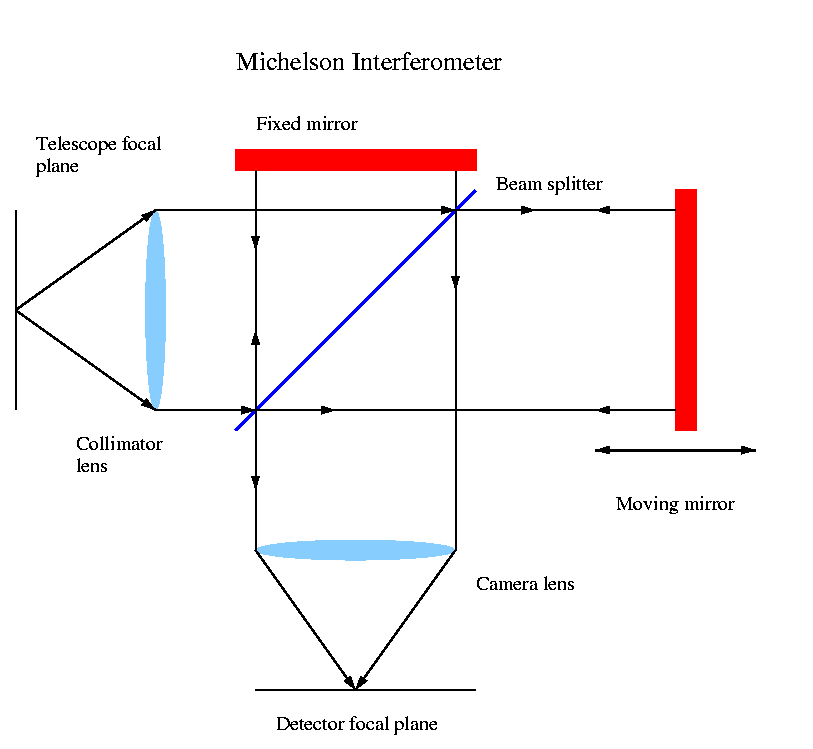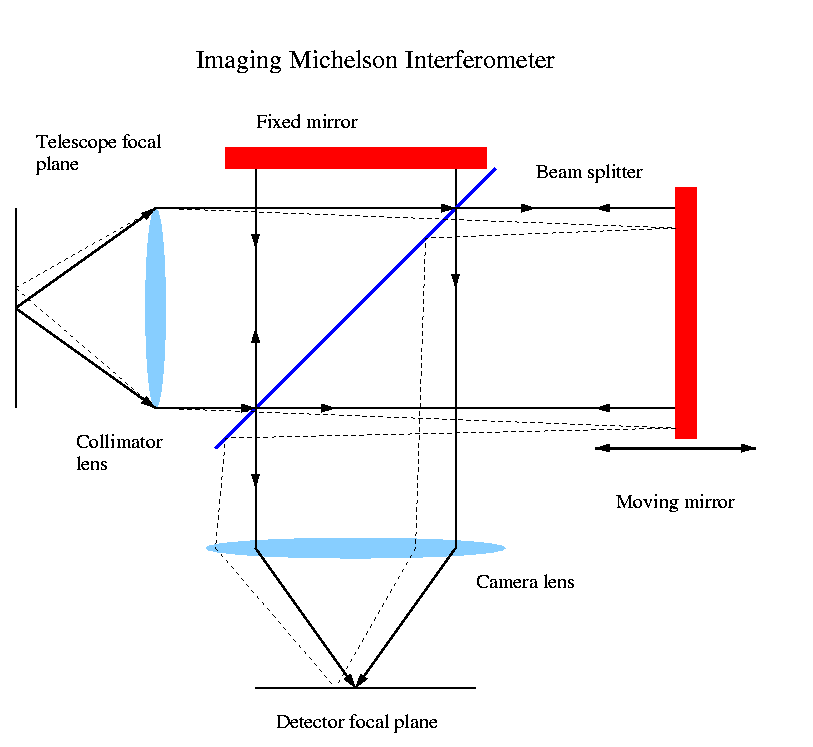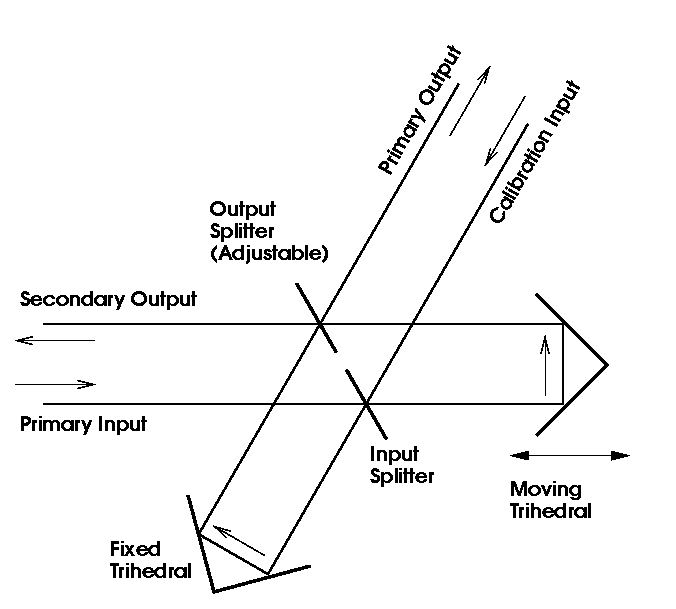Michelson Interferometers 
An interferometer is an instrument for making precise optical measurements.
It splits light into two or more beams that travel unequal paths and interfere
with each other when reunited. This interference appears as a pattern of
light and dark bands called interference fringes. Information derived from
fringe measurements is used for precise wavelength determinations, measurement
of very small distances and thicknesses, and the study of spectral lines.
Michelson Interferometer
The figure shows a simple Michelson inteferometer that uses a beamsplitter
to divide a beam of light into two. A perfect beamsplitter reflects 50%
of the incident light and transmits 50%. One beam travels towards a stationary
mirror, the other to a mirror that can be moved back and forth. When the
beams are recombined at the beamsplitter the light has traveled different
distances.

Imaging Michelson Interferometer
An Imaging Michelson interferometer is simply a Michelson interferometer
where the telescope focal plane is imaged onto a detector array. An interferogram
is recorded for every pixel in the field of view, and hence a spectrum
can be obtained for every object.

Four-Port Interferometer
In astronomy, interferometers are used to measure
the angular separation between stars, the diameters of stars, and their
spectra. It is this last application that we use for NGST.

One of the disadvantages of a classical Michelson is that the beamsplitter
reflects 50% of the light back to the source. For IFIRS we have chosen
a four-port design, shown here, that wastes none of the light. Instead
of flat mirrors, IFIRS uses cube-corner mirrors, which introduce a displacement
between the input and output beams.
Famous Michelson Interferometers
One of the most famous applications of a Michelson interferometer is in
the Michelson-Morley experiment, an attempt to detect the velocity of the
Earth with respect to the hypothetical luminiferous ether, a medium in
space proposed to carry light waves. The procedure depended on a Michelson
interferometer, because this device can be used to compare the optical
path lengths for light moving in two mutually perpendicular directions.
Michelson reasoned that, if the speed of light were constant with respect
to the proposed ether through which the Earth was moving, that motion could
be detected by comparing the speed of light in the direction of the Earth's
motion and the speed of light at right angles to the Earth's motion. No
difference was found. This null result seriously discredited the ether
theories and ultimately led to the proposal by Albert Einstein in 1905
that the speed of light is a universal constant.
More recently the Far Infrared Absolute Spectrophotometer (FIRAS)
on the COBE satellite
was used to make the most precise measurement of the spectrum of the cosmic
microwave background.
According to these measurements, the temperature of the Universe is
2.726 +/- 0.004 K. The spectrum of the cosmic microwave background
is extremely close to that of a perfect black body. The agreement is so
good that constraints can be placed that no more than 0.03% of the microwave
energy in the Universe could have been emitted more than a year after the
Big Bang. Some cosmologists have proposed that such energy might have been
released by supermassive supernovas, by black holes, or by the decay of
unstable exotic particles.




